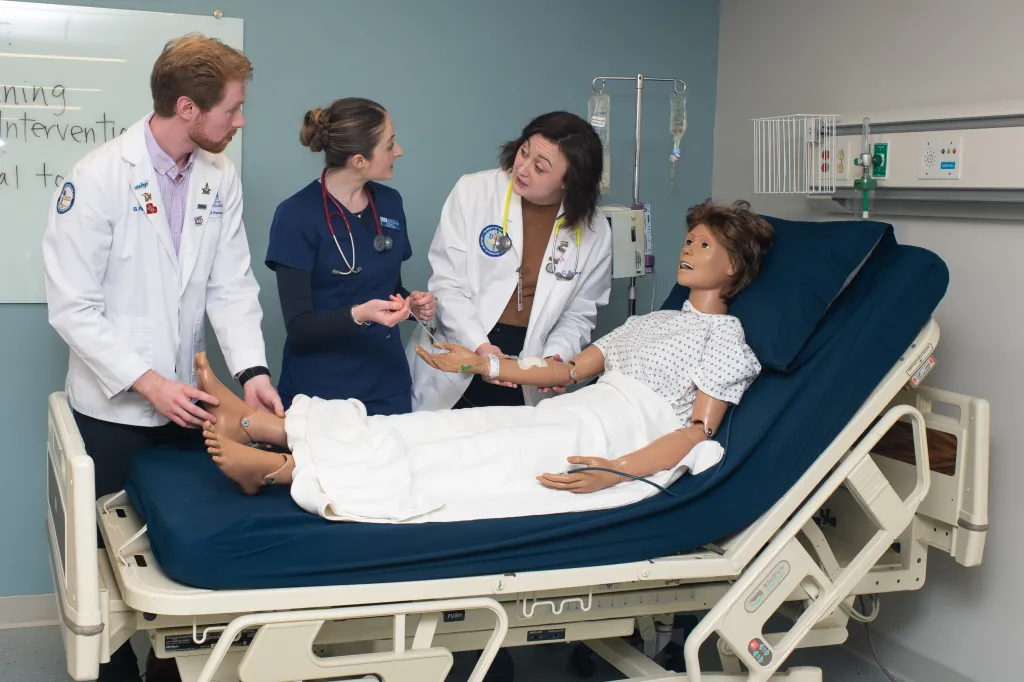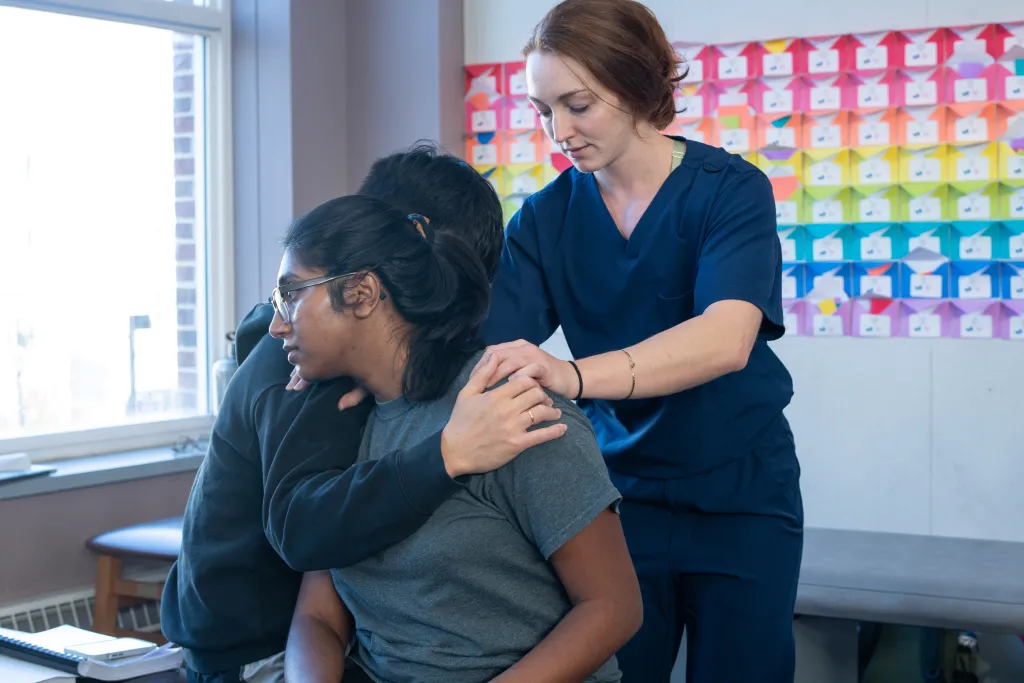What is Osteopathic Medicine?
Osteopathic Medicine is a distinct American branch of evidence-based, mainstream medicine that stresses promoting health as much as reacting to disease.
Doctors of Osteopathic (D.O.) medicine are physicians and surgeons who know that health is interconnected with all aspects of a person’s life and are trained to see patient care as a synthesis of deep knowledge of functional anatomy with consideration of a patient in their particular context. D.O.s have a full range of medical treatment options, including surgery, prescribing drugs, and manual medicine. By considering the big picture, treatment goals aim to support a patient’s overall health as well as address acute symptoms.
Osteopathic medical schools’ curricula differ from schools that train Doctors of Medicine (M.D.) in that D.O.’s receive specialized training in the musculoskeletal system and treatment. Since D.O.s are trained to see the body as an integrated unit of systems that work together to heal and maintain health, they believe that the whole body’s structure should be optimized to facilitate its ability to self-regulate.


The Osteopathic Profession
Doctors of Osteopathic Medicine (D.O.) are one of two types of fully-licensed medical doctors in the United States, and practice in every medical specialty. D.O.s can work either independently, as associates or partners in group practices, or as employees of hospitals, medical groups, and the government, including the military. D.O.s can also work in an academic, research, or pharmaceutical setting. As physicians and surgeons, D.O.s examine, diagnose, and treat patients, prescribe medication, interpret diagnostic tests, and all of the other tasks expected of modern medical doctors.
Education
D.O. physicians and surgeons have demanding training requirements. Becoming a D.O. requires four years of medical school after obtaining a bachelor’s degree, and is divided into the first two years — pre-clerkship years — and the second two years — clinical or clerkship years — of training.
Pre-clerkship is on-campus training where the fundamental knowledge of anatomy, manual medicine, clinical skills, and laboratory sciences are taught primarily in a lecture, small group, simulation, and lab setting. Students also gain knowledge from biomedical science courses in these types of settings. Unlike in other types of education, students at osteopathic medical school are assessed for competency of skill in Osteopathic Manual Medicine (OMM) as well as traditional clinical skills, and graded from knowledge-based exams. Clerkship takes place primarily while students are rotating on various specialty services at clinics or hospitals exposing the students first-hand to what is involved in providing medical care in different settings. D.O. students must also pass national board exams to progress, and may take M.D. board examinations, as well. Once clerkship is completed, D.O.s complete further training at D.O. and/or M.D. residencies and fellowship programs, which — depending on their specialty — take an additional three to seven years to complete.
Job Outlook
Demand for doctors in the American Healthcare System continues to grow faster than the supply, with a shortfall of between 61,700 and 94,700 by the year 2025. Job growth for physicians is projected to increase into the foreseeable future. Amid this, Osteopathic Medicine is growing at a tremendous pace with the number of D.O.s increasing by 276% since 1986.*
